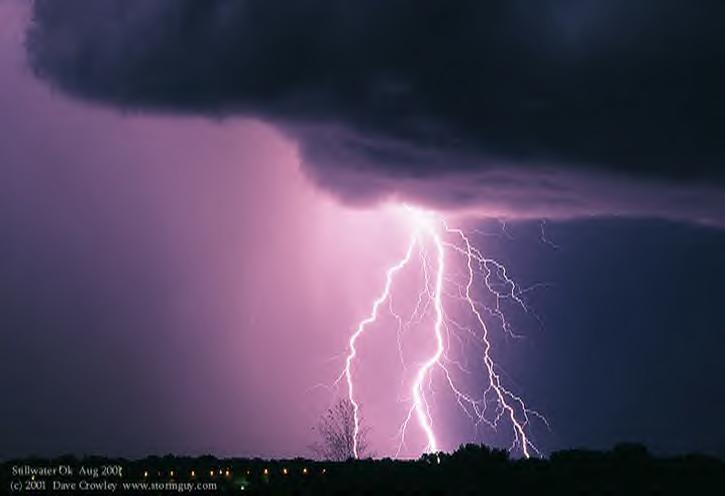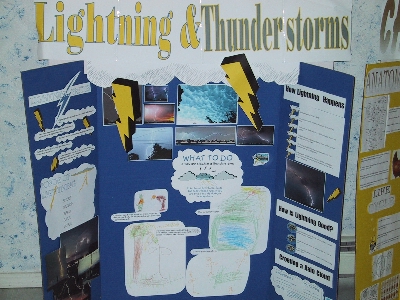
How Thunderstorms Form
- Moisture rises and forms a cloud
- When a cloud is full, it releases moisture in the form of rain drops
- Droplets in the clouds each have a different charge: positive and negative
- Different charged droplets are attracted to one another and begin moving toward each other
- The moving droplets bump and cause static electricity, which creates a spark we see as lightning
- Lightning can spark from one place in a cloud to another place in the same cloud; from one cloud to another cloud; and from a cloud to the ground
Good Things About Lightning
- it puts back nitrogen into the soil
- it causes forest fires, which are needed so new trees can grow
- it splits open the seed pods of the Sequoia tree, so young trees can sprout

What to Do
If You're Outside in a Storm- Get away from trees and tall things. Stay away from hilltops, benches and open fields. Find low places for shelter, like ditches
- Crouch : bend over, hands on knees, keep as little of your body on the ground as you can. Keep head off ground
- If with a group spread out
- Stay away from water
Back to My School Projects Page | Back to Mikey's Page
Storm Facts
- Since warm temperatures are needed for thunderstorms, places close to the Equator have more.
- The island of Java has thunderstorms 223 days of the year.
- Lightning strikes the earth between 8 and 10 million times a day.
- The Pacific Coast of the U.S. doesn't get many thunderstorms because air is dry and cool.
- A bolt of lightning is actually one "leader" coming from a cloud, and another "leader" coming from the earth. They meet to form what looks like one bolt.
Create a Cloud!
- Boil water in a tea pot
- Hold a metal bowl of ice over the steam
- Look under the bowl to see a cloud